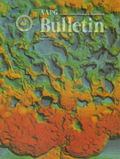Shale smear factor
| Quantitative Fault Seal Prediction | |

| |
| Series | AAPG Bulletin, June 1997 |
|---|---|
| Author | G. Yielding, B. Freeman, and D. T. Needham |
| Link | Web page |
Lindsay et al.[1] proposed a shale smear factor to constrain the likelihood of shale smear continuity. Based on their observations of abrasion smears in a lithified sequence, they define the shale smear factor (SSF) as (see Figure 1c)
The shale smear factor remains constant between the offset terminations because it does not depend on smear distance (although lateral variations in fault throw would have a corresponding effect on the calculated SSF). SSF thus models the profile of abrasion-type smears. From a study of 80 faults (excluding composite smears), Lindsay et al.[1] concluded that shale smears may become incomplete for an SSF greater than 7. Smaller values of SSF are more likely to correspond to continuous smears and therefore to a sealing layer on the fault surface. The values of SSF are not additive for compound smears because thin shales give higher SSF and dominate the sum. In such cases, a simple application of SSF values would take the minimum value (most sealing) from the relevant shale beds at that point on the fault.
References
- ↑ 1.0 1.1 1.2 Lindsay, N. G., F. C. Murphy, J. J. Walsh, and J. Watterson, 1993, Outcrop studies of shale smear on fault surfaces: International Association of Sedimentologists Special Publication 15, p. 113-123.
- ↑ Bouvier, J. D., C. H. Kaars-Sijpesteijn, D. F. Kluesner, C. C. Onyejekwe, and R. C. Van der Pal, 1989, Three-dimensional seismic interpretation and fault sealing investigations, Nun River field, Nigeria: AAPG Bulletin, v. 73, p. 1397-1414.
- ↑ Fulljames, J. R., L. J. J. Zijerveld, R. C. M. W. Franssen, G. M. Ingram, and P. D. Richard, 1996, Fault seal processes, in Norwegian Petroleum Society, eds., Hydrocarbon seals-importance for exploration and production (conference abstracts): Oslo, Norwegian Petroleum Society, p. 5.

![Figure 1 Smear factor algorithms for estimating likelihood of clay smear on a fault plane. (a) Clay smear potential (CSP)[2][3] given by the square of source-bed thickness divided by smear distance; (b) generalized smear factor, given by source-bed thickness divided by smear distance, with variable exponents; (c) shale smear factor (SSF)[1] given by fault throw divided by source-bed thickness. Methods (a) and (b) model the distance-tapering of shear-type smears, whereas method (c) models the form of abrasion smears.](/images/f/f8/Shale-smear-factor-fig2.png)